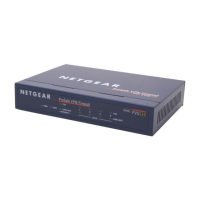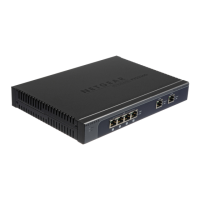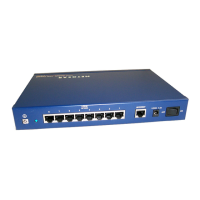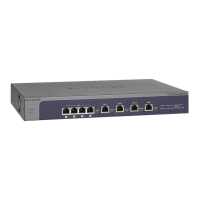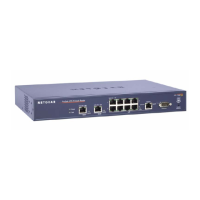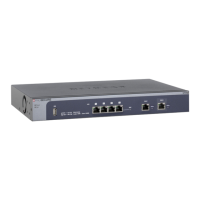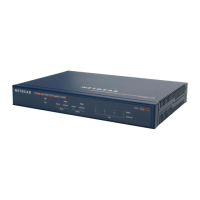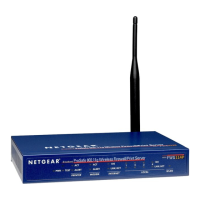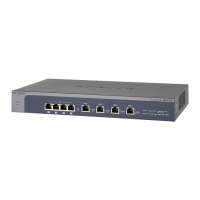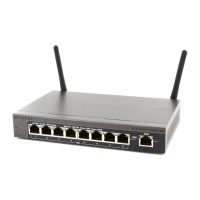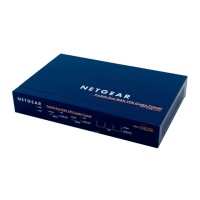Reference Manual for the ProSafe Wireless 802.11g VPN Firewall Model FVG318
6-4 Basic Virtual Private Networking
v1.0, October 2005
• Will either endpoint use Fully Qualified Domain Names (FQDNs)? Many DSL accounts are
provisioned with DHCP addressing, where the IP address of the WAN port can change from
time to time. Under these circumstances, configuring the WAN port with a dynamic DNS
(DynDNS) service provider simplifies the configuration task. When DynDNS is configured on
the WAN port, configure the VPN using FDQN.
FQDNs supplied by Dynamic DNS providers can allow a VPN endpoint with a dynamic IP
address to initiate or respond to a tunnel request. Otherwise, the side using a dynamic IP
address must always be the initiator.
• What method will you use to configure your VPN tunnels?
— The VPN Wizard using VPNC defaults (see Table 6-1)
— Advanced methods (see Chapter 7, “Advanced Virtual Private Networking”)
• What level of IPSec VPN encryption will you use?
— DE — The Data Encryption Standard (DES) processes input data that is 64 bits wide,
encrypting these values using a 56 bit key. Faster but less secure than 3DES.
— 3DES — (Triple DES) achieves a higher level of security by encrypting the data three
times using DES with three different, unrelated keys.
—AES
• What level of authentication will you use?
— MDS — 128 bits, faster but less secure.
— SHA-1 — 160 bits, slower but more secure.
Table 6-1. Parameters recommended by the VPNC and used in the VPN Wizard
Parameter Factory Default
Secure Association Main Mode
Authentication Method Pre-shared Key
Encryption Method 3DES
Authentication Protocol SHA-1
Diffie-Hellman (DH) Group Group 2 (1024 bit)
Key Life 8 hours
IKE Life Time 24 hours
NETBIOS Enabled
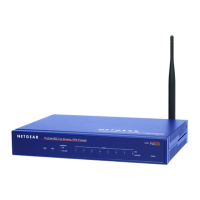
